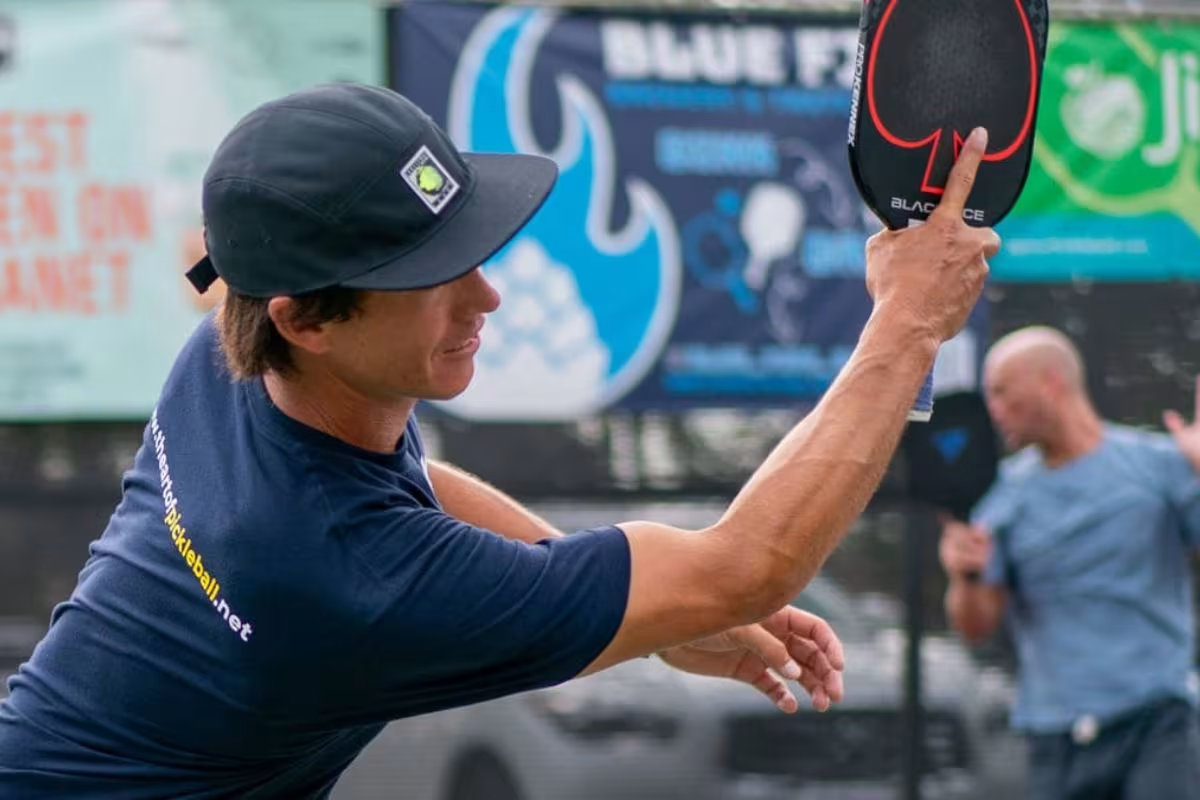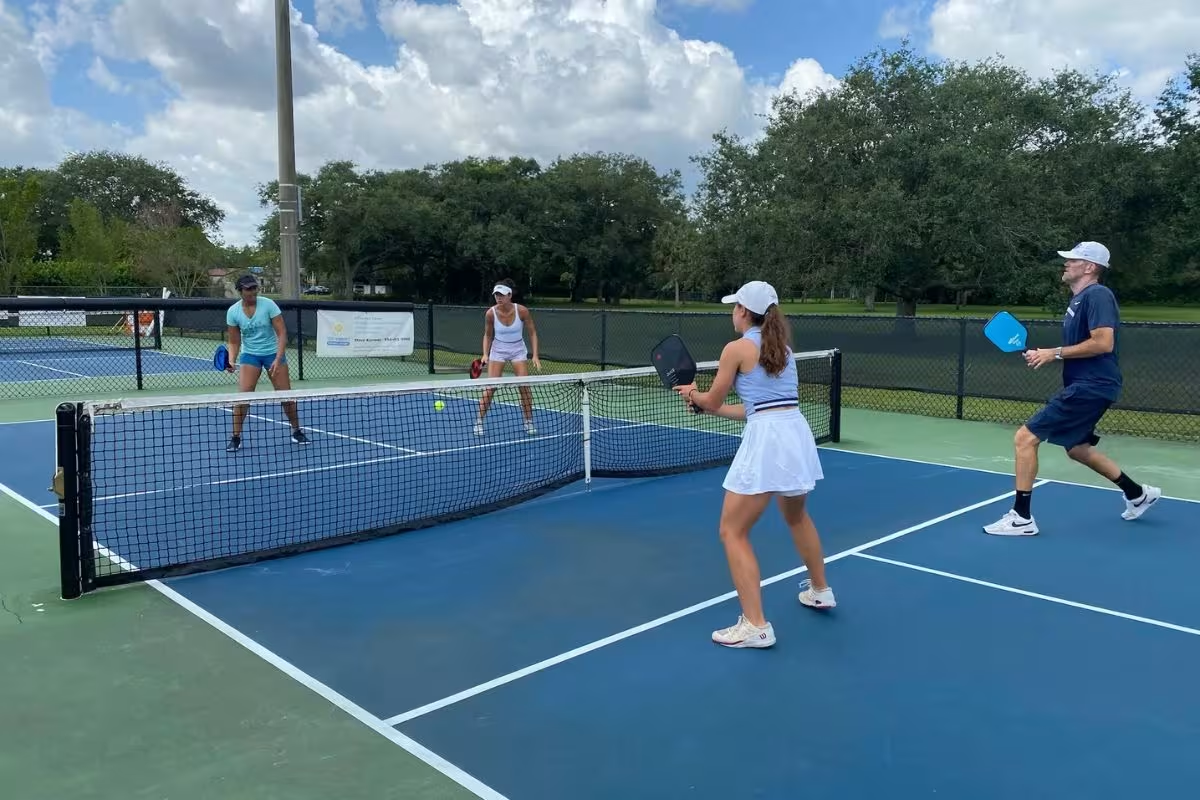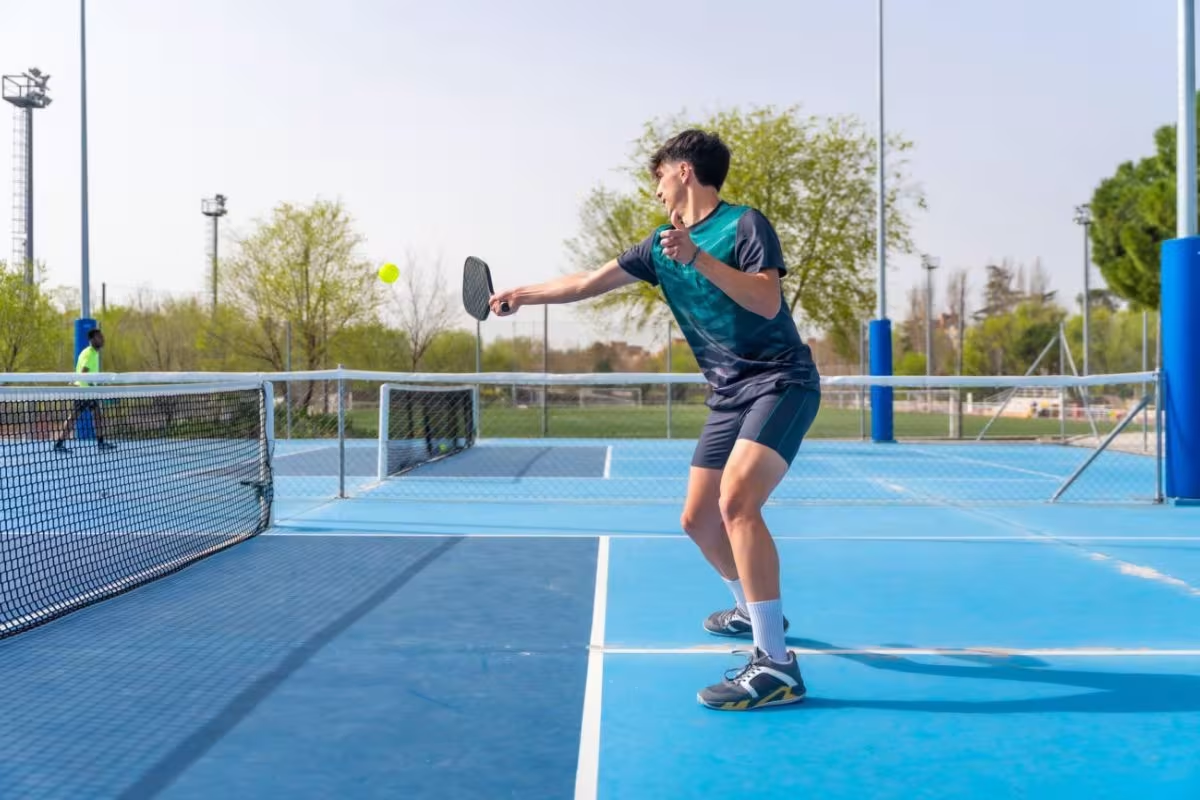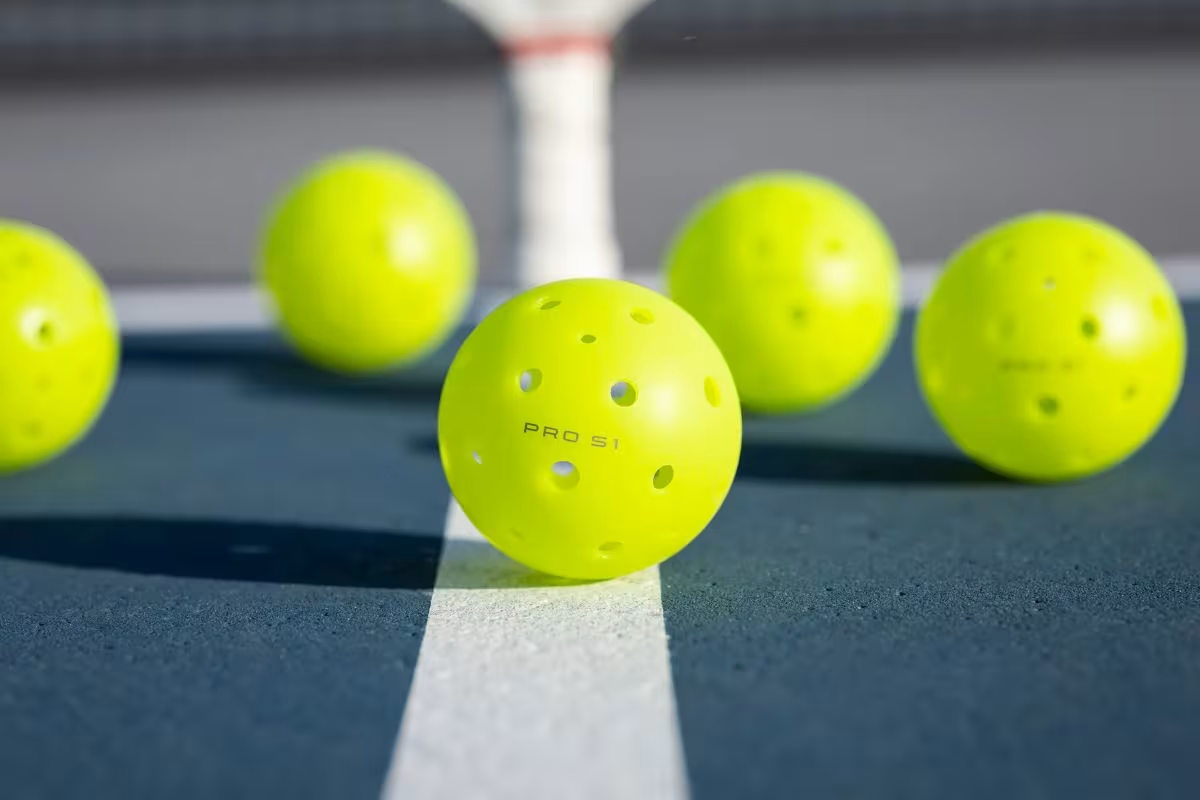Secrets to Seizing Control in Pickleball: Returning a serve in pickleball is not just a simple act; it is a critical strategic maneuver that can dictate the entire flow of the game. The return is more than just a response; it’s a powerful shot that sets the tone for the point. By mastering this essential skill, players can put their opponents on the defensive and position themselves favorably for the next exchange. At the heart of this strategy lies a fundamental goal: getting to the kitchen.
Getting to the Kitchen: The Primary Objective
The primary objective for the receiving team in pickleball is straightforward: reach the kitchen, or Non-Volley Zone, as quickly and efficiently as possible. With this goal in mind, players should break down their return options and analyze the strategies that underlie each one.
Option 1: Utilizing the Deep, Flat Return
- When to Use It: This option is ideal against a powerful server or an opponent known for aggressive third-shot drives.
- Strategy Behind It: A deep, flat return—meaning one that lacks spin—forces opponents to retreat and execute their third shot from as far back as possible. The deeper the return, the more difficult it becomes for them to strike aggressively. This tactic keeps the ball low and provides players ample time to advance to the kitchen line, minimizing defensive workload.
- Why It Works: Most players thrive when they can hit from near the kitchen. By returning deep, players push their opponents back to or beyond the baseline, leaving them off-balance with limited options. This shift in advantage is critical.
- Pros: Keeps the opponent at the baseline while allowing time to approach the kitchen.
- Cons: If the return isn’t deep enough, it can open the door for a counterattack, and there’s a risk of hitting long.

Option 2: Employing the High, Lofted Return
- When to Use It: This strategy is beneficial when players need additional time to reach the kitchen or if their opponent struggles with overhead shots.
- Strategy Behind It: A high, slower-moving return provides ample opportunity to advance while opponents await the ball’s descent. Although this return doesn’t put them in immediate distress, it allows players to establish a presence at the kitchen.
- Why It Works: Even if the opponent manages a comfortable third shot, the returning team is likely already poised at the net, ready to counter. This high return is an ally in buying crucial time.
- Pros: Offers plenty of time to reach the kitchen.
- Cons: Higher-level opponents may capitalize on this return, with an increased risk of hitting long.
Option 3: Targeting the Middle of the Court
- When to Use It: This pickleball tactic shines when opponents are indecisive or confused about who should handle shots in the center.
- Strategy Behind It: A return directed straight down the middle limits opponents’ angles and forces them into a dilemma: who will take the shot? This indecision can lead to errors or weak returns, providing the opportunity to dictate the next exchange.
- Why It Works: Many teams falter when it comes to communication, especially with balls that drift toward the middle. A well-placed return here exploits that weakness, creating hesitation and rushed decisions.
- Pros: Can confuse opponents while limiting their attacking angles.
- Cons: If mis-hit, it opens up both sides of the court.

Option 4: Mastering the Spin Return
- When to Use It: This approach is effective against opponents who are uncomfortable with topspin or backspin.
- Strategy Behind It: Returns with spin can be particularly troublesome for opponents. A heavy topspin return causes the ball to drop quickly after clearing the net, hindering their ability to drive it aggressively. Conversely, a backspin return keeps the ball low, making it challenging for the opponent to get under it for a solid third shot.
- Why It Works: Spin complicates matters significantly. If executed correctly, it can force weak or mishit returns, giving players the upper hand early in the point.
- Pros: Can induce weak responses if the opponent struggles with spin.
- Cons: Requires precision; an inaccurate return can give the opponent an easy opportunity.
Option 5: Targeting the Weaker Opponent
- When to Use It: This strategy is effective whenever a player identifies a weaker opponent, especially if their third shot is inconsistent.
- Strategy Behind It: This classic tactic across racket sports is straightforward: relentlessly target the player who has shown vulnerability. The more pressure applied, the more likely the opponent is to falter, resulting in easy points.
- Why It Works: Pickleball thrives on pressure, and consistently targeting a weaker player can disrupt their rhythm, leading to forced errors.
- Pros: Effectively exploits the opponent’s weaknesses.
- Cons: An over-reliance on this strategy can become predictable.
Bonus Strategy: The Lob Return for Resetting the Point
- When to Use It: This pickleball tactic is useful when a player needs to reset the point and regain control after a hurried or defensive return.
- Strategy Behind It: Though less common, the lob return can serve as a clever way to alter the pace and force opponents to deal with a high, deep ball. It’s particularly effective when players need to take a moment to recover or when moving forward quickly isn’t feasible.
- Why It Works: While risky against advanced players, a well-executed lob can be useful at lower levels or in windy conditions where overhead control becomes difficult.
Consistency Is Key for Control
Ultimately, the return presents an opportunity to seize control of the game. Pickleball Players don’t need to aim for winners; the goal is to create the best possible scenario for themselves and their partner to dictate the pace of the rally and advance to the kitchen line.
News in Brief: Secrets to Seizing Control in Pickleball
Mastering the return in pickleball is crucial for gaining control during matches. Pickleball Players can employ various strategies, including deep, flat returns to keep opponents back, high lofted returns for more time, and targeting weaker players. Each option offers distinct advantages, whether confusing opponents with middle shots or complicating their game with spin. Ultimately, consistency and strategic choice are essential to dominating the court and successfully advancing to the kitchen.
ALSO READ: Exhausted After Every Game? Learn the Secrets to Overcoming Pickleball Fatigue!


